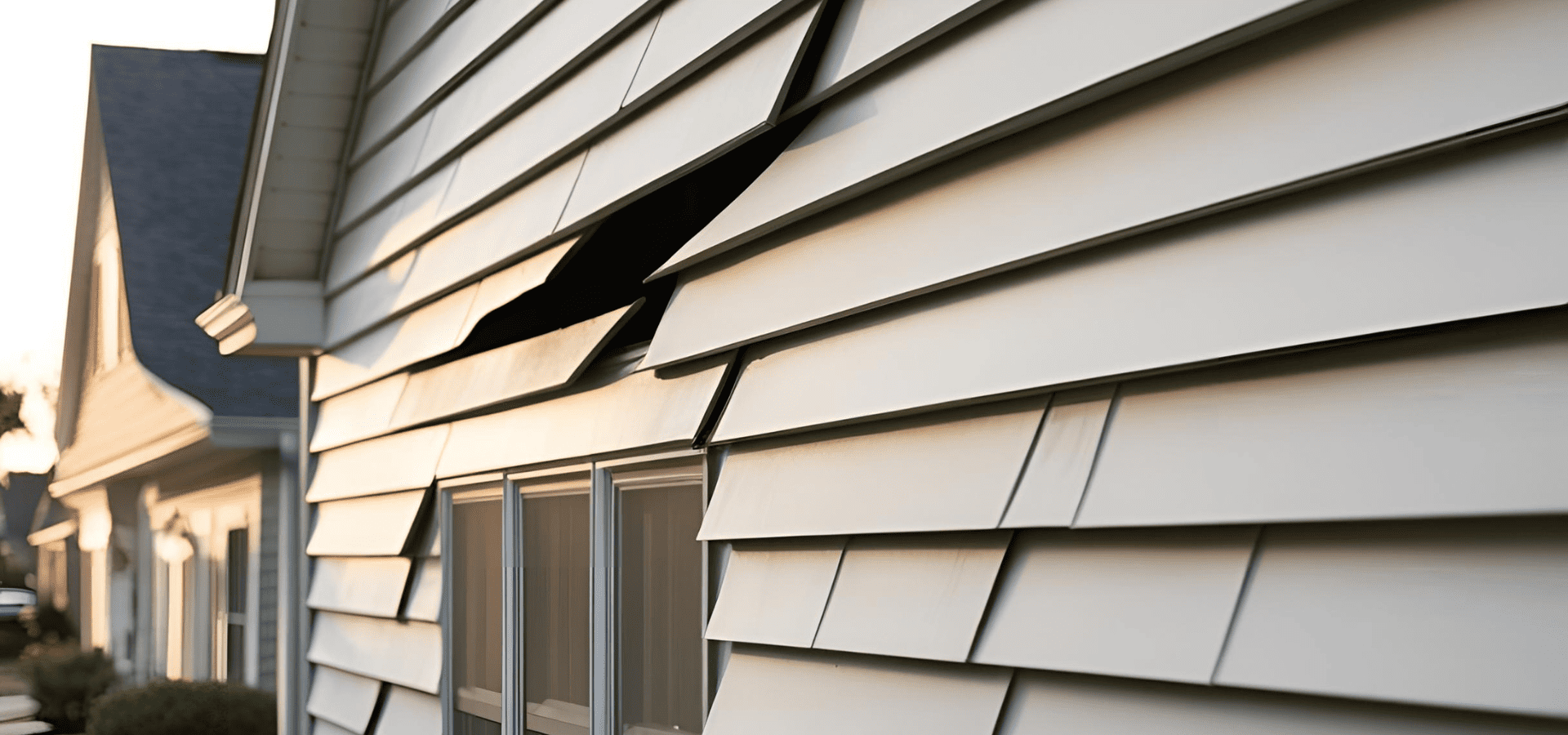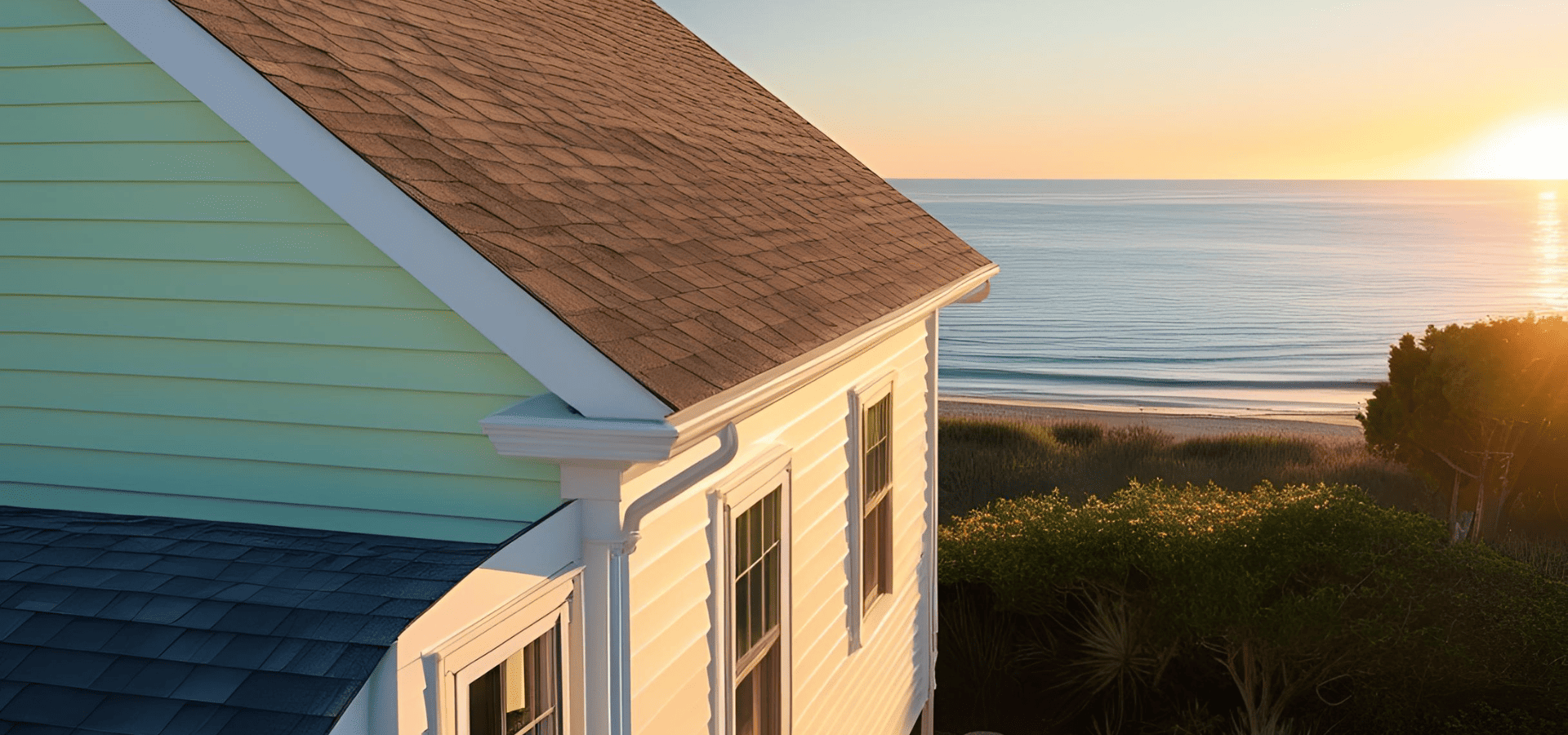Common Siding Problems And Fixes
Your siding is imperative to protecting you against moisture damage, mold, mildew, UV rays, debris, hail, and pests.
So when problems and damages arise, it's of the utmost importance that you remedy them asap before they escalate into more serious problems.
According to the US Department of Commerce, in 2024, the state with the highest number of hail events was by far Texas with 878 such incidents.
The state with the next most incidents after Texas was Kansas at just 495, more than 40% less than Texas.
Unsurprisingly, Texas also ranks first in property damage caused by hailstorms.
Specifically, Dallas-Fort Worth is a hotspot for hailstorms. According to the Insurance Information Institute (III), Dallas-Fort Worth consistently ranks near the top nationwide every year for hail damage insurance claims.
Unfortunately, repeated insurance claims can significantly drive up your premiums, even if they are a result of uncontrollable hailstorms.
As such, fixing any issues with your siding quickly and keeping it strong is of paramount importance to protecting your home and keeping your insurance premiums manageable, especially if you reside in Dallas-Fort Worth.
That's why in this article, we're going to be covering common siding problems and how to fix them, so that you'll know how to keep your siding in its best condition.
1. Cracks & Holes
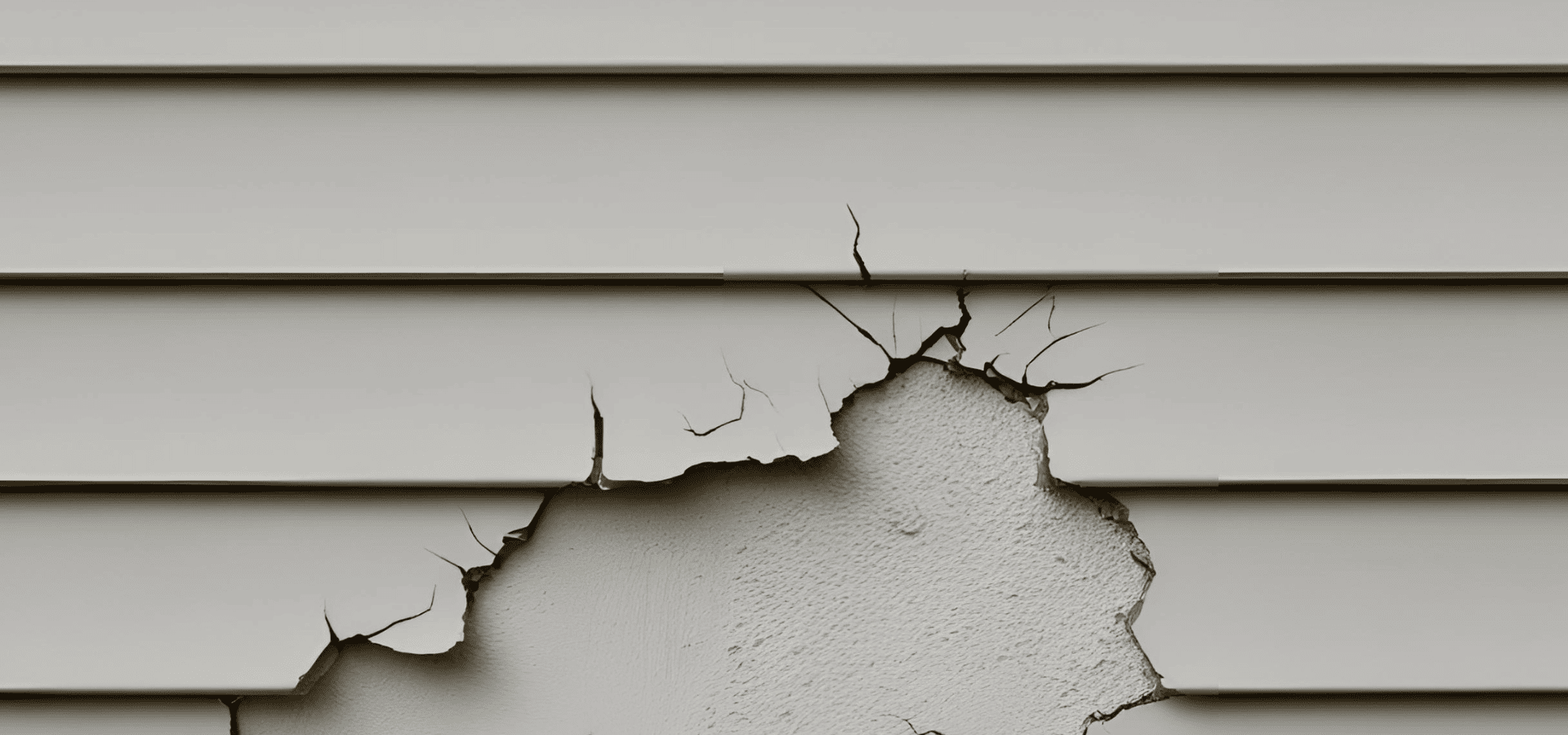
Cracks and holes on their own aren't actually serious problems.
However, if you don't patch them up, you're allowing moisture, heat, and pests to pass through. When these unwanted elements reach the layer beneath your siding, i.e. your home’s walls, they can lead to mold, mildew, and rotting. Pests can also nest in your walls.
This means you’ll not only need to spend money on removing the mold, mildew, or pests, but also repairing the damage caused by them. In more severe cases where there’s structural damage, repair costs can range from several thousand to more than ten thousand dollars.
When left untreated, these cracks and holes will also get bigger as temperature changes cause your siding to expand and contract, putting further stress on any cracks and holes.
Insects like termites or small animals like mice can also chew on your siding, making the holes or cracks bigger.
In Dallas-Fort Worth, where hailstorms are very common, the impact can easily cause cracks and holes, so it’s important to know how to repair these.
The Fix
First off, if the hole or crack is small, here’s how to repair it, based on your siding material:
- Vinyl: Use a vinyl repair kit along with specialized adhesive, which should be included in the kit, to fill and seal the crack or hole.
- Fiber Cement: Use cementitious patching compound for small cracks and holes.
- Wood: Fill the crack or hole with weather-resistant wood filler. Allow it to dry, then if it’s painted wood, apply an exterior primer. If it’s natural wood, use an exterior-grade wood sealer or clear coat.
- Brick/Stone Veneer: Use mortar repair caulk to prevent water intrusion.
- Metal: Use weather-resistant automotive body filler or a specialized metal patching compound.
- Stucco: Use acrylic caulk or stucco patching compound.
Those are the fixes for small cracks and holes. But for larger ones, anything more than half an inch wide or over an inch in diameter, you’ll pretty much have to replace the affected siding panels.
The only exceptions are stucco and brick and stone veneers.
For stucco, even for larger damages, you’d simply apply a stucco repair mix because unlike other siding materials, stucco doesn’t come in panels, but is a paste that you apply.
As for brick and stone veneers, if there are broken or loose pieces, they need to be replaced,
Otherwise, if the crack or hole isn’t so big that it completely causes the brick or stone veneer piece to break or come loose, you can just repoint with a fresh mortar mix.
For very severe damages though, the kind that affects the siding’s overall structural integrity or the underlying substrate, complete replacement is usually necessary.
It’s usually hard for laypersons to judge whether the damage is extensive though, so if you’re not sure, it’s best to engage a siding professional who can assess your siding and make the right call.
Prevention
To strengthen your siding, you can install a rigid foam board or backer board behind it.
Other than that, make sure it’s installed properly, or your siding will fall apart more easily when impacted.
Other than that, there’s really not much you can do besides choosing stronger siding materials.
2. Moisture Damage: Mold, Mildew, Rot
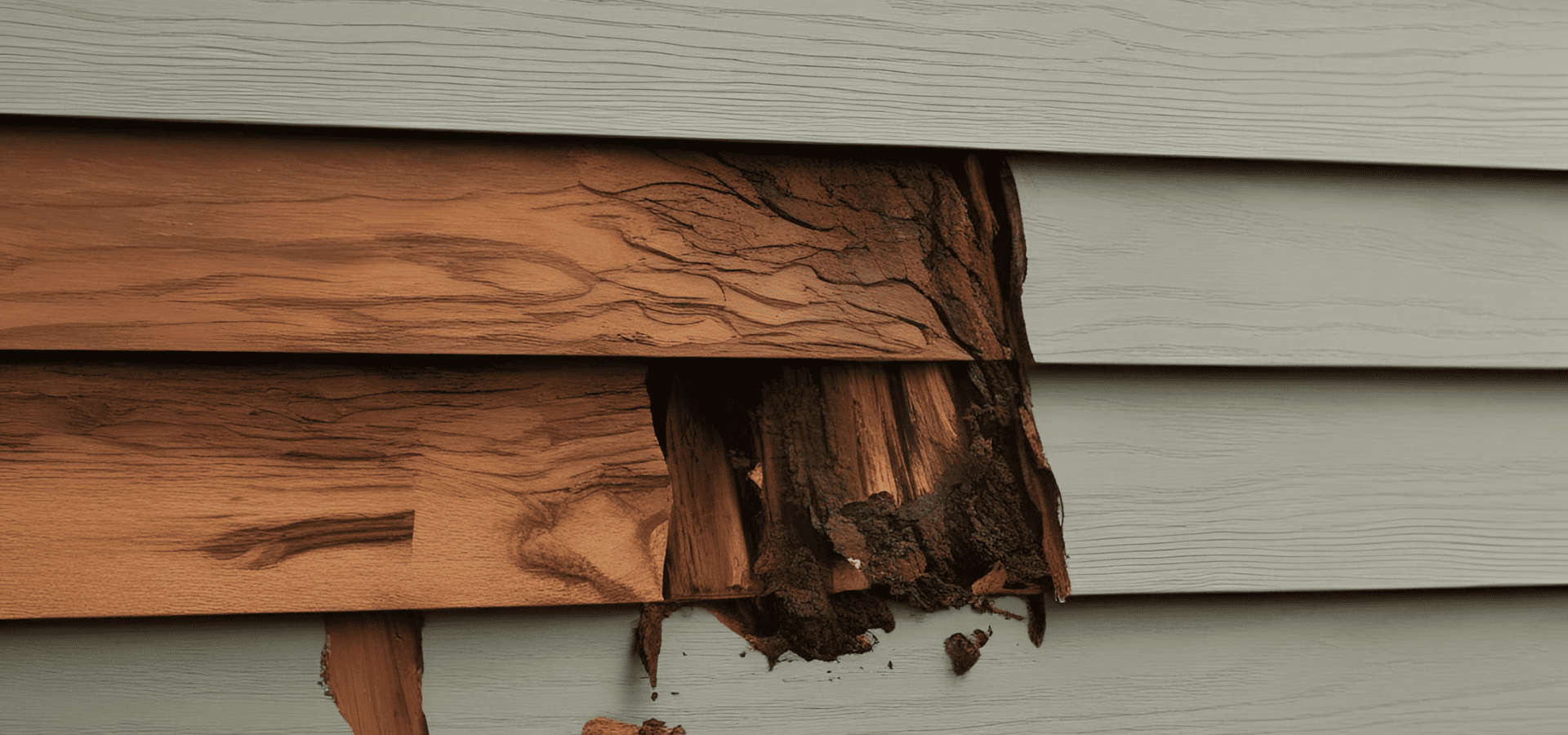
Another commonly faced siding problem, especially in Dallas’s humid climate, is moisture damage.
While in theory this shouldn’t happen with proper installation, there are many factors that are hard to control that can lead to moisture damage.
This can be your sealing degrading over time, gaps that were overlooked during installation, or just natural wear and tear.
The main siding material that will be affected by this is wood.
Rotting can only happen with wood, and for mold and mildew, for most materials, including brick and stone veneers, metal, vinyl, and fiber cement, even if mold does develop, it’s usually only surface-level and can be easily cleaned off.
Stucco is the only material besides wood that’s really susceptible to serious mold and mildew. As such, we’ll focus on wood and stucco.
The Fix
For wood rot, the best solution is usually to simply replace the rotted sections, unless it’s very minor rot. If the rot is deeper than half an inch, it’s usually best to just replace the rotten wood piece.
You can test this by pushing a screwdriver into the wood, and if it sinks in easily, that’s a sign that replacement is necessary.
If the rot is very minor, scrape out the rotted parts with a screwdriver, apply wood hardener over, then fill up the hole with wood filler or epoxy.
Then, sand the finished product once it’s dry so that its texture is consistent, and apply a coating of either primer and paint or a wood stain to protect it from moisture.
So that’s it for rot.
Now for mold and mildew, for wood, if it’s surface-level and not deep damage, you can
clean it off using a bleach solution of 1 part bleach and 3 parts water, along with a few drops of mild detergent, and scrub it with a soft-thistle brush.
For deeper damage though, which can again be checked using the screwdriver test, depending on the damage, you’ll either have to replace the whole wooden board or apply wood hardener and wood filler, the same as for rot.
If the wood is completely soft, that’s a sign of deep, severe damage, and it’s usually best to just replace the wooden board.
But if it’s only slightly soft, then you can fix it by scraping the soft part out and applying wood hardener and filler.
Now, for stucco, if it’s surface-level, clean it the same way as wood. Then, if the cause of the mold was a crack or a hole, as we went through earlier, seal it up using stucco patching compound.
However, if mold has grown behind the stucco siding, that’s much harder to clean. Even if you do patch up any holes and cracks and seal the siding properly, the mold will keep coming back.
As such, if you notice that the mold issue keeps returning or if the underlying wood framing is rotted or has mold on it, you’ll have to replace your entire stucco siding.
Prevention
The best way to prevent moisture damage is tight, secure installation that leaves no gaps and proper sealing, along with a good drainage system and proper ventilation.
3. Warping/Buckling
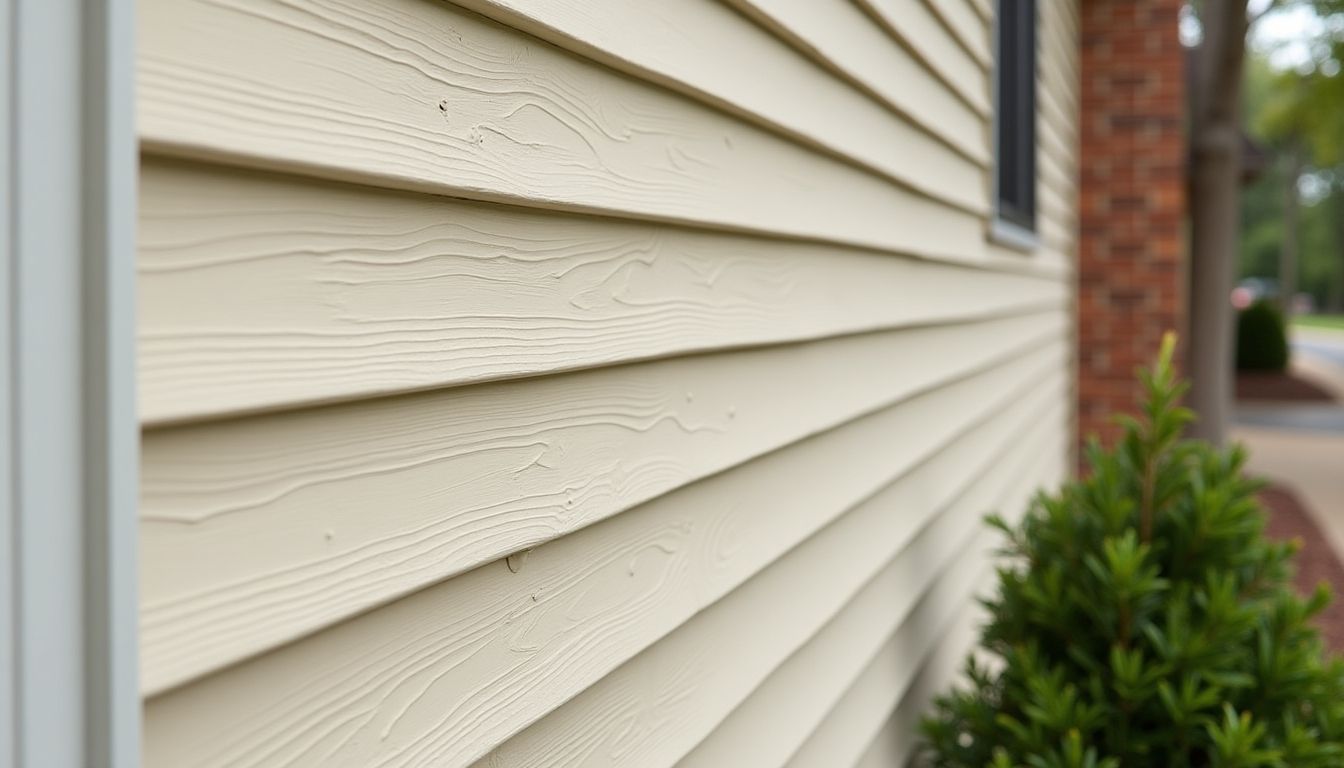
If your siding is losing its shape, that’s a very bad sign that you have serious underlying issues, and you’re going to have to replace the affected areas.
Warping or buckling can be caused by various factors, including intense heat which causes expansion, poor installation that leaves zero room for expansion, moisture behind the siding, or just aging materials.
The Fix
Unfortunately, there’s no fix for this. You really just have to replace the affected pieces.
Also, look out for signs of moisture issues. You’ll know the warping is caused by trapped moisture if you see mold, mildew, rotting, a musky odor, or if your siding feels soft, especially for wood and fiber cement.
If it is caused by moisture issues, that’s a sign that water is getting in between your siding and the other layers, but can’t get out.
In such cases, you need to check your house wrap and sheathing for any signs of damage or improper installation that may have allowed water through, as well as your flashing, weep holes, and drainage gaps to ensure that your drainage system is working and draining water well.
Prevention
To prevent warping and buckling, firstly, ensure that your siding is installed properly such that there’s room for expansion.
Next, if your area is extremely hot, like Texas, it’s a good idea to use lighter colors. The closer a color is to white, the more light it reflects and the less it expands.
Finally, moisture can also cause warping and buckling, so as we discussed above, ensure that your siding and any gaps are sealed and there’s proper drainage and ventilation.
4. Fading & Discoloration
Finally, fading and discoloration are very common, especially in areas with harsh, intense sunlight, like Texas.
Fading and discoloration mean that your protective layer, whether it’s a sealant or some other coating, is worn out in that area.
Harsh elements and sunlight wear out the coating faster, causing these issues, but those aren’t the only causes. Your protective layer can also fade over time or be caused by improper cleaning which damages the finish.
The Fix
The fix is pretty straightforward. You basically reapply whatever protectant it is over the discolored area and repaint if needed.
The only time when this won’t work is if your siding is brittle, cracked, or chalky to the touch, as that likely means that your siding has structurally degraded. When this happens, you need to replace the affected part.
Prevention
To prevent fading and discoloration, besides cleaning gently to not damage the finish, it’s a good idea to use UV-resistant coatings, especially for regions like Texas.
Final Tips
There you have it, four common siding problems and their solutions.
While you will have to call professionals in when needed, at least now you’ll know how to remedy common issues by yourself where possible.
Remember though, that to fix a problem, you need to know that it exists.
To ensure that you detect problems quickly and remedy them in time to prevent further worsening, make sure to inspect your siding at least once a year, and twice a year is recommended if your region has more extreme climates like Texas.
You should also inspect each time after major events like hailstorms and hurricanes.
You can keep most issues minor by detecting and fixing them early to ensure they don’t get worse, so don’t slack off on your inspections!
You may also want to consider investing in professional installation to prevent the various issues that arise from improper or poor installation.
Good luck!
You might also like
